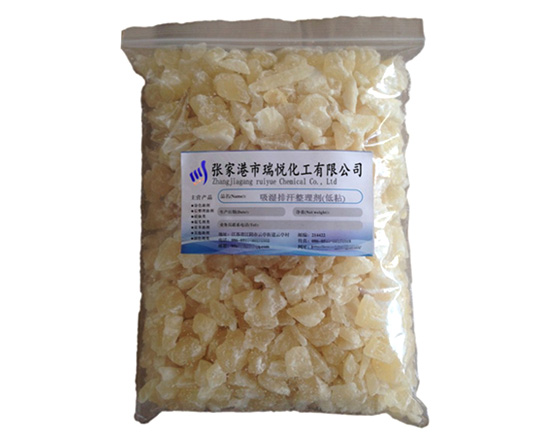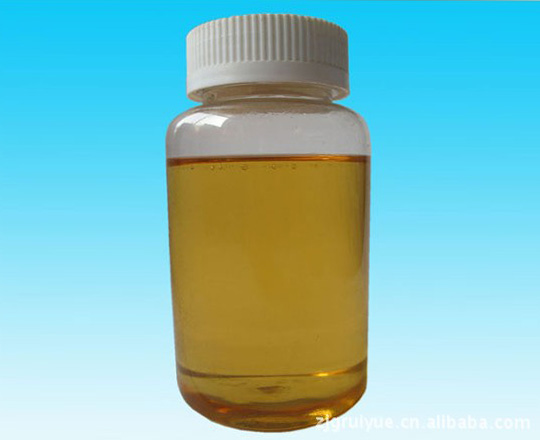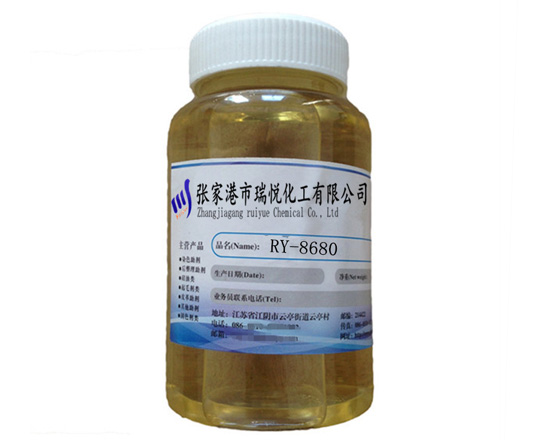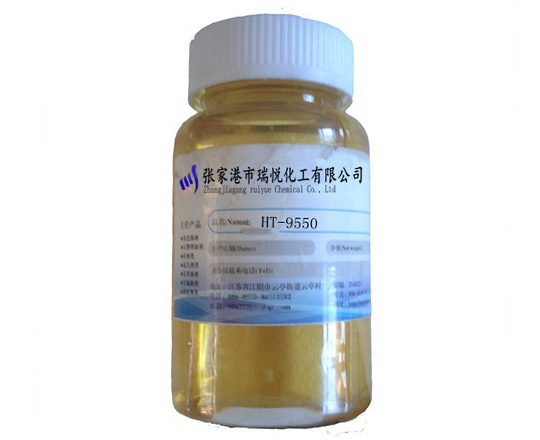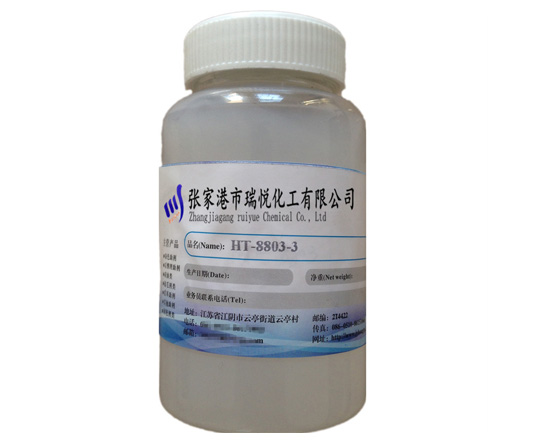Research on Dyeing Detergent for Polyester Fiber
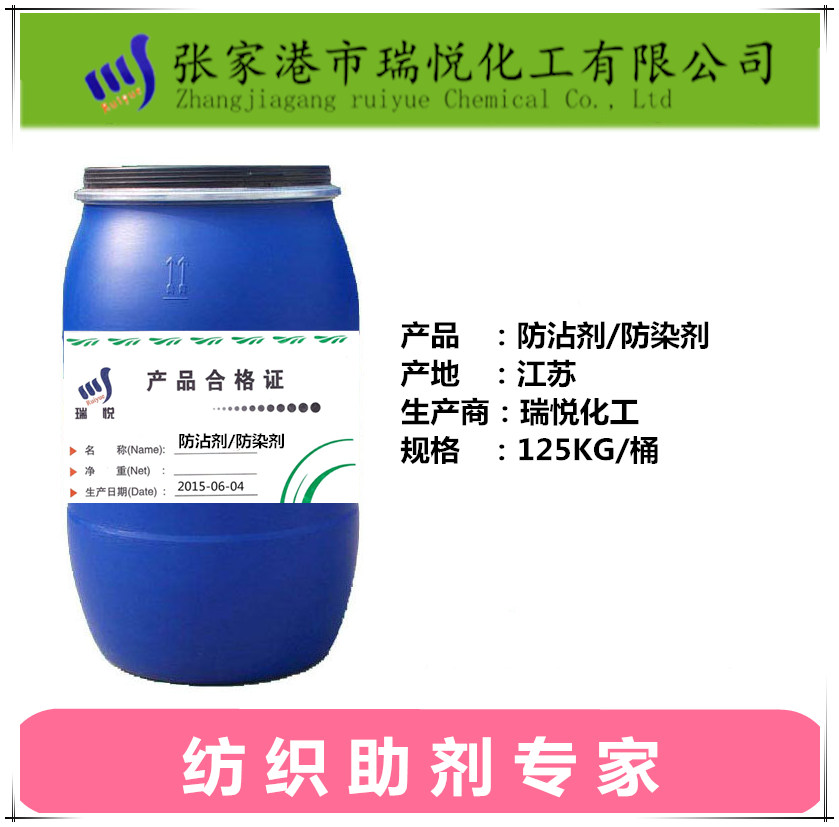
Chinese Library Classification Number: TS193.22 Document Marking Code: Adoi: 10.3969/j. issn. 1672-500x. 2011.04.006
Article ID: 1672-500X(2011)04-0019-051 Introduction
Polyester is the more mature production technology among the three major synthetic fibers. Polyester has many excellent properties, and the price is relatively cheap. At present, polyester dyes are basically disperse dyes. With the emergence of polyester fibers, disperse dyes have developed rapidly, becoming a major product in the dye industry and almost the only dye suitable for dyeing polyester. Although polyester, disperse dyes and corresponding dyeing and finishing processes have made a lot of progress so far, and even some dyes based on novel dyeing mechanisms have appeared, the dyeing of the entire domestic polyester industry is basically based on the traditional high temperature and high pressure overflow dyeing process. For traditional industries, in order to well remove the floating color of disperse dyes, after dyeing with disperse dyes (except the one-bath and one-step method), polyester or polyester cotton will be followed by a reduction and cleaning process with sodium hydroxide as a reducing agent. The important role of sodium hydroxide in the cleaning of disperse dyes is obvious, but it has many shortcomings, the most notable is the safety of storage and transportation, and the high consumption and high pollution. Therefore, people increasingly hope that there will be an auxiliary agent that can clean disperse dyes in a mild manner rather than a more intense chemical action, that is, a cleaning auxiliary with pure surfactant properties. Although there have been some disperse dye cleaning products with the nature of surfactants, there are few reports of surfactants that have a strong cleaning effect on disperse dyes. This article starts with the positive dyeing process of disperse dyes, and analyzes the effects of dispersants, leveling agents and stripping agents used in the production, dyeing process and light stripping process of polyester dyed fabrics on disperse dyes. , Summarize the different effects of different types or structures of surfactants on dyes, and use pure surfactants to clean the floating color of disperse dyes and material selection methods.
2. Disperse dye dyeing and finishing auxiliary
Disperse dye is a dye with relatively small molecular weight. It has a simple structure and is in a non-ionic state with extremely low solubility in water. A large amount of dispersant needs to be added to the solution to make the disperse dye into a suspension and stably dispersed in the solution. . When dyeing, it is often necessary to use the solubilizing properties of polyoxyethylene ether nonionic surfactants to control the dyeing speed of the dye. The following are the main dispersants and levelling agents used in polyester dyeing [1].
2.1 Dispersants for disperse dyes
Disperse dyes need to add a large amount of dispersing agent in the process of grinding and manufacturing or dyeing polyester, which mainly plays the role of disperse dyes to prevent their aggregation. The most commonly used dispersant is the condensate of naphthalenesulfonic acid and formaldehyde, such as the dispersant NNO. Among these dispersants, the dispersing effect of dinaphthalenesulfonic acid is the best. Sodium lignosulfonate is also a commonly used dispersant, which is prepared from sulfite pulp waste liquid. The molecular weight of lignin is higher than that of NNO, and it also has a certain protective colloid effect [2]. There are some other types of dispersants, which are relatively less used, and are generally formaldehyde condensates of naphthalenesulfonic acid derivatives.
2.2 Levelling agent for disperse dyes
Disperse dye leveling agents can be divided into two types according to their mode of action. One is a carrier whose main mode of action is to increase dye migration; the other is a solubilizing leveler whose main mode of action is slow dyeing. The most commonly used carrier is o-phenylphenol, which has little solubility in water, but has better solubility in polyester. In addition, the carrier function also includes trichlorobenzene, benzoate, biphenol, methyl naphthalene and salicylic acid and so on. This article mainly introduces the slow-dyeing leveling agent with solubilizing effect. Such additives are mainly polyoxyethylene long-chain alkyl derivatives (such as Pingping-O, TX-1O, etc.) and polyol type. The former can be divided into polyoxyethylene alkyl lipids according to different binding groups. And ethers. The application of such additives has a relatively high cloud point, and has a higher affinity and solubilization for dyes. The micelles of the additives absorb dye particles to reduce the content of dyes in the solution and achieve the purpose of slow dyeing.
3. The mechanism of action of polyester dyeing auxiliaries on disperse dyes
3.1 The mechanism of action of dispersant
In the dyeing process, the hydrophobic groups in the anionic surfactant molecules can bind together with the disperse dye molecules by van der Waals forces. Some anionic surfactants containing phenolic or hydroxyl groups can also form hydrogen bonds with the hydrogen-bonding groups in the dye molecule (usually hydroxyl or amino), thereby forming a strong negatively charged layer around the dye particles. The dye is stably dispersed in the dye bath.
3.2 The mechanism of action of levelling agent
Non-ionic surfactant is a common component of polyester levelling agent. On the one hand, it has a relatively efficient solubilization function for disperse dyes; on the other hand, it has a higher affinity for fibers due to its own molecular structure characteristics. ability. Non-ionic surfactants have a low critical micelle concentration. At a certain concentration, a higher concentration of micelles or micelles can be formed in water. They can provide a hydrophobic area so that a certain amount of disperse dyes can be dissolved into the gel in a single molecule state. In the group, it plays the role of absorption and solubilization. The micelle in the solution is a phase that can absorb the dye in the system and maintains the exchange of the dye with the solution. The dye molecules in the micelle and the dye molecules in the solution are in equilibrium. When the dye is dyed and fixed to the fiber, the number of dye molecules in the dissolved state in the solution is reduced, and the dye molecules in the micelle can be dispersed more quickly to supplement [3].
3.3 Washing translation of dispersion and leveling mechanism
Although the above leveling agent (here mainly refers to the solubilizer that plays a role of retarding dyeing) and dispersing agent are all auxiliary agents used in the dyeing process, through the analysis of their mechanism of action, it can be seen that they are and The principle of anti-staining during the cleaning process is related. Dispersant for disperse dyes, mainly disperse dye particles to make them uniformly dispersed in the solution without agglomeration; solubilizing and levelling agent for disperse dyes, mainly to absorb solubilized dye particles, increase their water solubility in the solution, and reduce dyes Contamination of polyester fibers. These two functions are exactly necessary for standard detergents. One is to disperse and emulsify the washed dye particles to prevent their agglomeration and precipitation; the other is to increase its presence in the detergent and help prevent it. Secondary staining effect. Since the principle of action is similar, the selection of dispersing and solubilizing components in washing can be considered to a certain extent by the type of dispersing agent and solubilizing leveling agent in the process of disperse dye dyeing.
Surfactants with different structures have different properties. Although the selection of specific components of disperse dye detergents cannot be applied to dye auxiliaries, it can start from many related and known structural laws.
4. The influence of structural factors on the performance of cleaning materials
An excellent detergent must not only have a good cleaning ability but also have a good ability to prevent secondary staining. To consider these two factors, in the final analysis, it is necessary to start with the basic dispersibility, solubilization and detergency, that is, to consider the way the detergency components act on the disperse dyes. The detergency substances of different structures will inevitably show different Even if the functional groups of the similar structure of the substance are different, the application performance will be different. First, analyze the influence of different surfactant molecules on the dispersion and solubilization effect of disperse dyes from the structural point of view. From the dyeing and finishing process of disperse dyes to the slight stripping of disperse dyes, the surfactants that can act on disperse dyes to achieve the effects of being dispersed, solubilized and eluted are mainly anionic and nonionic. class. The additives of the two structures are divided into many types. In general, anionic additives mainly play a role in dispersion and stability, while nonionic additives are more prominent in solubilization and leveling.
The following is the discussion and conclusion of the influence of some structures on the dispersion, solubilization and detergency of surfactant molecules.
4.1 The influence of structure on the dispersion of cleaning substances
The surfactants that have a dispersing effect on disperse dyes are mainly anionic. The most common are naphthalenesulfonic acid formaldehyde, sodium lignosulfonate and some types of low molecular weight anionic surfactants. The average molecular weight of the dispersant for disperse dyes has a greater impact on the dispersion performance. For different types of sodium lignosulfonates, Li Zongshi mentioned in the "Disperse Dyes Progress" that as the degree of condensation of lignin molecules increases, the average molecular weight increases (with extreme values), and the thermal stability of the dispersant is stable. Enhanced. The reason is that as the molecular weight of lignin increases, its adsorption to dye particles increases. Even at higher temperatures, it is not easy to desorb from the surface of the dye particles, thereby maintaining the dispersion stability of the dye in the solution. Some people have also done research on dispersants such as MF and NNO. As the degree of molecular condensation increases, their dispersion stability is gradually improved [4]. At the same time, the hydrophilic group of the dispersant molecule also has an impact on its own dispersibility. Generally, as the hydrophilic group of the molecule increases, the solubility of the dispersant in water will be improved, but its adsorption capacity on the solid surface will be reduced. At higher temperatures, the dispersant molecules are easily desorbed from the particle surface. The high-temperature dispersion performance of the dispersant generally follows the following sequence: high sulfonation degree alkali modified sodium lignosulfonate>medium and low sulfonation degree sodium lignosulfonate>naphthalenesulfonic acid formaldehyde condensate>low molecular weight anion From the type of dispersant.
Certain types of non-ionic surfactants also have a certain dispersing effect on disperse dyes. Ma Zhengsheng et al. studied and analyzed the high temperature solubility of disperse dyes by selected different types of polyoxyethylene-based nonionic surfactants, and found that the hydrophilicity of nonionic surfactants generally increases with the increase of the oxyethylene chain. As a result, its dispersibility at high temperature is weaker than other nonionic surfactants with smaller oxyethylene chain content tested. 4.2 The influence of structure on the solubilization of cleaning substances
Anionic surfactants are less effective in solubilizing disperse dyes. Sodium lignosulfonate, which has a greater effect on disperse dyes, has little solubilization ability. Datyner used 11 dispersants and 8 disperse dyes to study the solubilization effect of dispersants on disperse dyes, and found that lignin sulfonic acid Sodium dispersants are not strong in solubilizing many disperse dyes, and the degree of sulfonation has almost no effect on the solubilization [5].
Non-ionic surfactants have better selectivity for dyes with smaller molecular mass than other additives, and are characterized by stronger affinity and solubilization. Among them, the typical poly(ethylene oxide) type additives are often used in dyeing. The solubilizing levelling agent is widely used. The following is a summary of the influence of structure or substituent groups on the solubilization of such additives: The solubilization ability of nonionic surfactants for dyes is related to the type of nonionic surfactants. Generally speaking, the solubilization ability of esters is better than that of esters. The ethers are big. In addition, the solubilizing ability of non-ionic surfactants to dyes is also related to the type of functional groups and molecular structure. The solubilizing ability of dyes in polyoxyethylene ether compounds conforms to the following relationship: triphenylphenol>styrene Phenol>nonylphenol>oleyl alcohol. The order of the solubilizing ability in the polyoxyethylene ether ester compound is: polyoxyalkyl ether oleate>polyoxyethylene ether sorbitan oleate. Through the above analysis and comparison, it can be seen that compared with ethers, ester surfactants are more in line with the standard of being an excellent leveling agent. At the same time, the foaming property of esters is also much smaller than that of ethers, which is more conducive to level dyeing fibers with dyes [6].
Hydrophilic groups also have an impact on the performance of non-ionic surfactants. The solubilization and leveling properties of non-ionic surfactants are improved after the introduction of sulfonic acid groups. This is because the addition of sulfonic acid groups improves the cause of non-ionic surfactants' aggregation failure when the temperature is higher than the cloud point. At the same time, the dispersing ability and leveling performance of molecules containing sulfonic acid groups have been improved to a certain extent.
In addition, there are some similar views. Zhu Yanmei et al. believed that the component that disperses the dye molecules is phenol, and the component that plays a role in leveling is alkylphenol polyoxyethylene ether. She used these two types of materials as test materials, and carried out co-condensation in different ratios and obtained The product was subjected to a dispersion level dyeing performance experiment, and it was found that the high temperature dispersion performance was better when the phenol content in the copolymer molecule was large, and the level dyeing performance was better when the alkylphenol polyoxyethylene ether content was large. Generally speaking, disperse dyes tend to bind to the segment at the junction of the hydrophobic group and the hydrophilic group.
4.3 The influence of structure on the cleaning performance of cleaning materials
A cleaning agent that can be put into production, even if it has the best ability to control the eluted dye in the bath, if it does not have a good dye cleaning ability, everything is empty talk. Regardless of the water solubility and HLB value of surfactant molecules, the cleaning effect of a detergent mainly depends on the affinity between the hydrophobic base of the surfactant molecules and the disperse dye particles. Surfactants of different structures and dyes have very different binding capabilities. The influence of the structure on the dispersibility and solubilization of detergents has been involved. It is determined that they contain polyoxyethylene-based groups that have strong binding power to disperse dyes. Groups of nonionic surfactants have a lot of application space. Polyoxyethylene ether bonds can combine with polar groups such as amino groups and hydroxyl groups in the disperse dye molecules to form hydrogen bonds, increasing the bonding mode and improving the firmness. Disperse dyes are dyes with relatively small molecules, and have poor water solubility and no ionization, resulting in a lack of action mode with most surfactants. Polyoxyethylene ether type surfactants can just improve the cleaning power of disperse dyes in this respect. We have made certain attempts in this regard, and selected some common anionic and non-ionic surfactants with representative structures in surfactants for the amount of 2% (owf) Disperse Red FB, Disperse Turquoise Blue SG-L and The cleaning test of disperse yellow S-G dyed polyester cloth shows that the cleaning effect of polyoxyethylene ether non-ionic AEO-9, AEO-13 and flat plus O is significantly higher than that of other types of surfactants, except that the molecules are relatively smaller. In addition to the low rubbing and soaping fastness of Disperse Yellow S-G, the fastness values of Disperse Red FB and Disperse Turquoise Blue SG-L are basically close to Grade 4. At the same time, there are data showing that non-ionic surfactants containing aromatic ring structures on the hydrophobic base have a strong binding ability to disperse dyes, which may be related to similar compatibility, because although disperse dyes have small molecules, they often contain some aromatic The auxochromic groups of the ring, they will have more binding points with molecules that also have an aromatic ring structure.
In summary, surfactants with different structures have different dispersibility, solubilization and affinity for disperse dyes. Through the selection of surfactants with specific structures and linking groups, or directional modification synthesis, surfactants with different cleaning functions can be obtained and applied to the preparation of cleaning agents. The following are some finished products of disperse dye detergents with pure surfactant properties.
5·Reduction-free detergent products
Detergents with pure surfactant properties have been reported at home and abroad. They are generally called non-reduction detergents. There are not many products of this type. Although they have been promoted in application, they cannot replace traditional reductive detergents.
Texchem has produced a multi-purpose new additive DAC that prevents cellulose fibers from being stained by disperse dyes. The performance of this product has been widely used in dyeing, washing and post-cleaning. TexassistDAC is a transparent, colorless and free-flowing liquid. It is a mixture of anionic and nonionic properties. When dyeing polyester fabric, it is not necessary to perform reduction cleaning after dyeing the polyester blended part to remove the disperse dye stained on the cellulose fiber. In addition, TexassistDAC has a good leveling effect on disperse dyes, and has an effect on low molecular weight polymers to prevent their diffusion.
The non-reduction detergent HK-8235 developed by Xia Jianming and others is a disposable detergent for polyester and cotton dyeing, which saves the time in the dyeing process of polyester and cotton.


